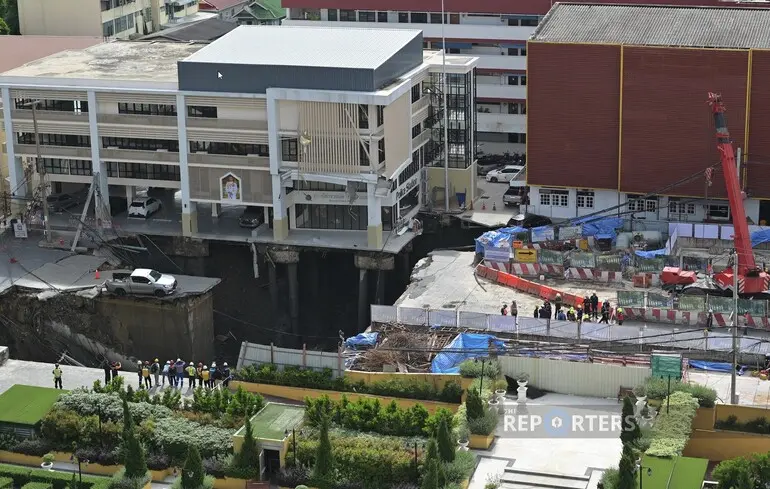Unexpected Road Collapse in Bangkok: Major Sinkhole Disrupts Traffic and Evacuates Nearby Residents

On the morning of September 24, Bangkok, the capital of Thailand, experienced a sudden and destructive infrastructure failure—a section of a major roadway collapsed, creating a deep sinkhole over 50 meters in diameter.
The incident caused widespread disruption, infrastructure damage, and forced evacuation of residents in surrounding districts.
This unexpected event has significantly impacted traffic flow and resulted in both human and material losses.According to city officials, the primary cause of the collapse was attributed to ongoing underground metro station construction, which had been in progress for several months.
Videos circulating online captured the scene as the road surface gradually subsided, pulling down electrical poles and damaging water pipelines.
Vehicles attempting to retreat from the area were unprepared for the quickly expanding sinkhole, which tore through the four-lane road completely.
The edge of the hole stopped just meters from a police station, highlighting the dangerous proximity of the incident.A nearby hospital announced a suspension of outpatient services for two days due to infrastructure damages.
Authorities clarified that the hospital building remained intact, but evacuation of the personnel and patients from the facility and other nearby structures was carried out as a precaution against further collapses.
Electrical and water supplies to the area were temporarily shut down.
Experts are now working to rapidly assess and repair the damage, especially critical as the monsoon season continues and heavy rainfall threatens to exacerbate the situation.This event has sparked concern regarding the safety and durability of urban infrastructure under construction in challenging weather conditions.
It also echoes previous natural disaster impacts in regions like Afghanistan, where earthquakes led to extensive destruction and human casualties, underscoring the importance of resilient infrastructure development in disaster-prone areas.

